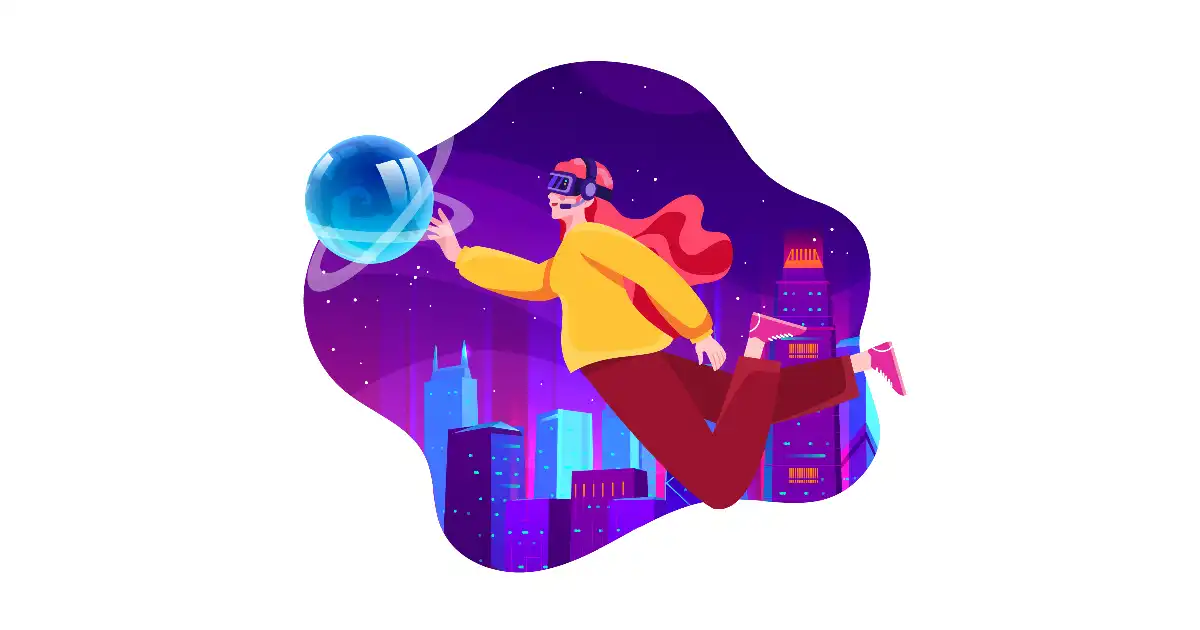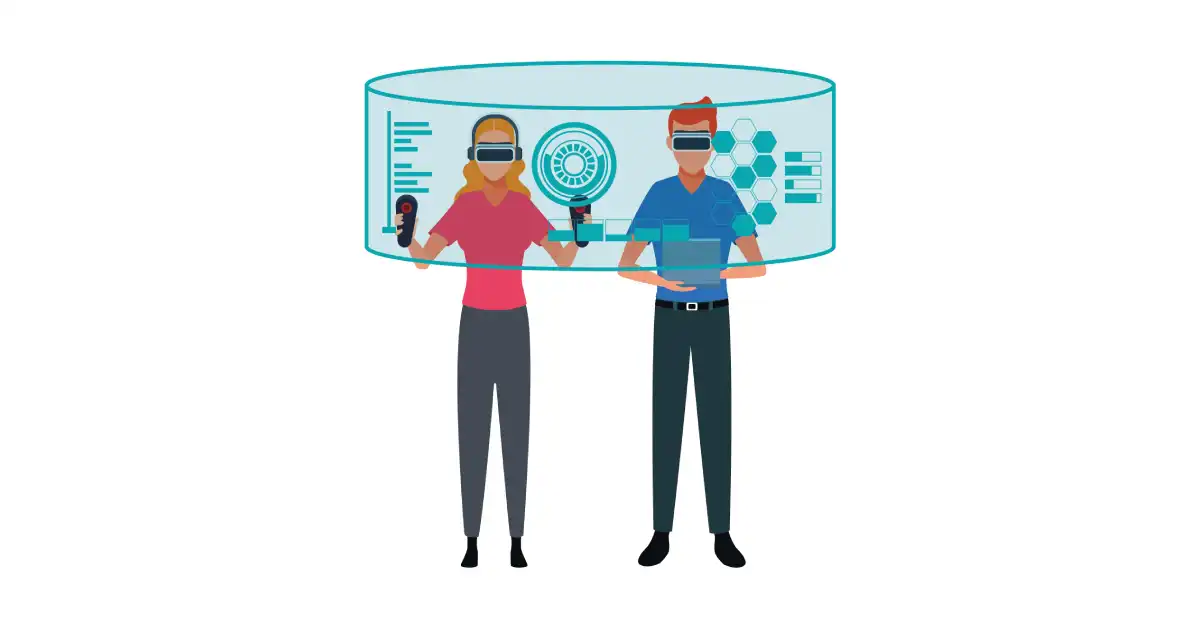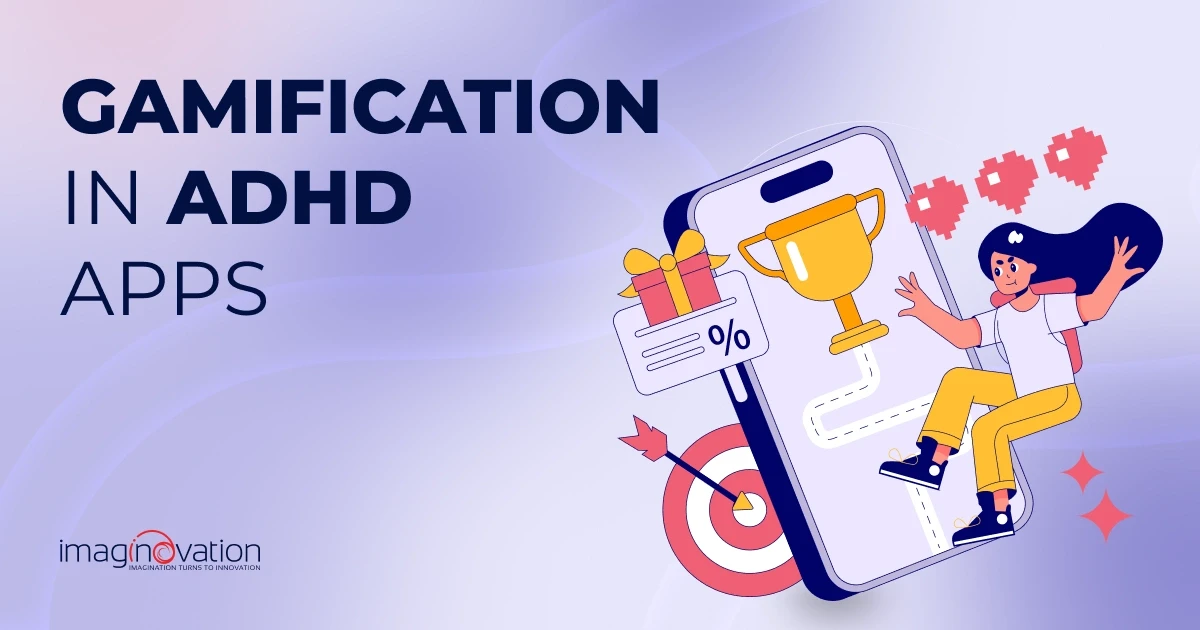As technology continues to advance, virtual reality has become an increasingly popular tool for businesses and individuals alike. With the ability to create immersive and interactive experiences, virtual reality offers endless possibilities for entertainment, education, and training.
However, developing a virtual reality app can be a daunting task, especially for those who are new to the technology. In this guide, we will take you through the essential steps and best practices for creating a successful virtual reality app, from ideation to launch.
Whether you are an experienced C-suite leader or a business owner who wants to create their first virtual reality app, this guide will provide you with the knowledge and resources you need to bring your vision to life. So, let's dive in and explore the exciting world of virtual reality app development!
History of Virtual Reality: An Overview
Gone are the days when VR, the new kid on the block, was treated as a sci-fi realm like Interstellar. Nowadays, companies are more aware of its possibilities. However, the journey has been extensive. It dates back to around the 1930s. Here's a peek.
- The 1930s: Around 85+ years ago, in Pygmalion Spectacles, Stanley G. Weinbaum cites a Google-based game. In the game, people can watch a holographic recording of virtual stories, including touch and smell.
- The 1960s: VR headsets got into development; Ivann Sutherland created the very first headset for use with military applications with specialized software and motion control platforms.
- The 1990s: Arcade games started using VR headsets for simulations; Nintendo announced Virtual Boy, marking the first home VR system.
- 2014: Facebook buys Oculus VR for US$2billion, starting a brand-new VR renaissance.
- 2016 and beyond: Companies all over began building their own VR headsets with innovations based on the fantastic new tech.

History backed with statistics may help drill down the need for focusing on VR app development. Here’s a quick glimpse.
- The VR market is projected to reach USD 20.9 billion by 2025, at a CAGR of 27.9% (Source)
- According to a research study, 171 million people use VR technology globally. Plus, there will be about 70.8 million VR users in the US alone in 2023, equalling roughly 21% of the population. (Source)
- According to yet another study, 1 out of 2 companies is either in the process of incorporating VR into their strategy or has already integrated VR into at least one dedicated line of business.
- Regarding consumer and enterprise VR revenue, in 2023, VR revenues are expected to climb to 15.81 billion U.S. dollars. (Source)
Bottomline: The future of VR is very promising and tempting. With precise development strategies, your company can profit from niche technology.
Also Read: A Complete Guide to Spatial Computing
How to Make a VR App?
Of course, you want your VR app to be a commercial success. Therefore, one needs to have clarity on the VR app development process to benefit from high performance. You can also look at facets such as low power-consuming architecture and an errorless application code. Plus, the process will require you to look at the hardware and software design, involving prototyping tools, frameworks, development libraries, and more.
Here's a detailed step-by-step look at VR app development.
1. Goal definition
Defining the goals for your app is an essential step. When you have clear goals, then it becomes easy to achieve them. It's simple: you can only develop a quality and clean experience with well-defined goals and precise parameters.
It is good to mull over and research what users expect from the app at this phase. Plus, it would help if you reflected on what you, as an app owner, want your users to experience. You may also consider the features that will give an immersive and compelling experience.
It is also great to think of accessibility facets. What's more: think about offering an in-depth guide using video tutorials and explainers. It always helps to think beyond reaching your new audience and offer features to help retain existing users and produce deeper engagements.
2. Compatibility definition
VR for smartphones
Smartphone VR is becoming the next big thing, with techno-giants like Samsung and Google making their own headsets and VR ecosystems. It is exciting to find the use of VR headsets using your smartphone's gyroscope. Thus, one needs to think of VR compatibility such that the device supports VR.
For instance: when one removes Apple's headset cord and further blocks the phone from the screen, it is easy to enable iPhone VR apps. Moreover, phone-based VR still has other problems. Thus, one needs to research the pain points so that one can deliver compelling physical experiences as desktop-based VR does.
VR for computers
Desktop virtual reality uses a computer monitor for VR applications. It is a cost-effective way in comparison to immersive VR. Plus, it does not require any expensive hardware or software.
Typically, VR apps are designed for Linux, Windows, and macOS. When it comes to an immersive VR experience, Oculus Rift, PlayStation VR, and HTC Vive are some popular devices that make this VR exploration possible. Thus, to reach more and more users, developers need to think of how to develop the exact design blocks to suit the business use case.
3. Platform selection

Yet another critical step in developing a VR app is choosing the right platform and software development kit. The deployment platform plays a significant role in the app development process. Why? Here’s the thing: the app platforms directly impact the app adoption rate and also have a direct impact on the revenue. When selecting, think of the questions:
- Will you be developing a VR app for mobile or a VR headset?
- What devices will your VR app support?
- Will your VR app support Android, iOS, or both (if you are developing a VR app for mobile)?
- Will your VR app be standalone or make a VR app inside VR providers like Oculus?
Moreover, when it comes to supporting VR development, you can consider VR platforms such as:
- XboxVR
- SteamVR
- Oculus Home
The advantage is you can benefit from the complete set of VR development tools. Plus, you don't need any software installation.
Yet another facet to think about is the launching platform of your app. You may consider trending platforms like mobile VR headsets (Samsung Gear), affordable options (Oculus Go), and more.
Furthermore, to reach top-notch game-playing users, you can think of Oculus Rift, HTC Vive, etc. Ultimately, you need to prioritize platforms where you can find your biggest audience.
4. Planning UI/UX elements of your app
Designing for a VR app needs a systematic approach, as you are designing for a 2-D environment, and the interactions are all based on the screen. For your VR apps, you need to think about designing space for a framework that considers all 360 degrees for the best user experience (UX).
The entire process, from the conceptualization of the production to the execution, will take a lot of fine-tuning. However, the tweaks will help your users with a comfortable and enjoyable experience.
5. Game engine selection
Take a moment to think: most game engines are available for free. Some popular examples of game engines are Gear VR's Unity3D, Nvidia's Havok, Unity Game Study, etc. It is vital to give thought while selecting the apt game engines, as it stores the data that users will see in their virtual world. Gaming engines can also be integrated with specific software development kits. Plus, multiple APIs are used to customize these game engines.
6. Choosing frameworks and libraries
App owners need to consider choosing the right frameworks and libraries. WebVR is a JavaScript API that helps create immersive 3D. It works with HTC Vive, Windows Mixed Reality, Samsung Gear VR, Oculus Rift, Google Daydream, etc. The API runs in the browser on the web and makes it possible for today's browsers to experience VR.
Using WebGL (Web Graphics Library) and WebVR technologies, you can offer a real-time communication channel between application code and hardware to render graphics.
7. Choosing design and prototype tools

Next, to make your VR app look good, the development team needs to think of the VR experience for testing and validation purposes. Prototyping helps in multiple ways, such as testing a 360-degree view. With these thoughts and insights, one can get a sense of scale, use of sensors, view position of the user, and many other attributes.
It will help if the team is familiar with prototype creation using various software like Photoshop, Google Blocks, etc.
8. Choosing Hardware
VR experiences are a lot like games, and developers can boost the entire experience with the right kind of hardware used for the VR app. The top choices include Oculus Rift and HTC Vive headsets. Typically, sensor systems by Rift and Vive have lesser hardware requirements. When choosing, it is best to opt for options that need less power and have a more comfortable range of motion. Here's a peek at the number of VR device types for consideration:
- Console
- Standalone headsets
- Light and Premium mobile VR headsets
- VR headsets connecting to external PCs
- VR haptic feedback suits
9. Releasing the app and continuously improving it
Your app is developed and now ready for release. Once the app is out, start compiling user feedback. It is best to make notes for future updates of the app, which will help improve your app get better. Use data and analytics to determine which features are the top ones and which aren't getting used. Which content is not working well?
Plus, one also needs to make sure to market the app well. Promote it on your social media channels. You may also think of spreading the word through blogs, newsletters, microsites, etc.
10. How to make a VR app that sells
As app owners, you need to think of app monetization. The monetization strategies need extensive marketing support before and after the launch of an app. Moreover, the right strategy will help you get the maximum benefits.
| Monetization Strategy |
What is it about? |
|---|---|
| In-app advertising model |
· App developers serve advertisements within mobile apps - and are paid in return for it. · These apps promote the ads at specific intervals. |
| Paid model |
· In the paid model, users must pay an upfront price before downloading. · Users need to pay a fixed price for the app use, regardless of the utility they get. · Typically, the model fits an app with high brand recognition and outstanding reviews and ratings. |
| In-app purchases |
· The in-app purchase model is popular for generating huge amounts of money by selling virtual products (or physical goods) from within the app. · Apple and Google take 30% of every in-app purchase through any app. · For such purchases, there is a set commission paid by the app publishers to the app-store owners. |
| Freemium model |
· The model allows users to use some basic features of the app for free and then charge for specific updates and access to special features. · The model helps attract users to the services and generate revenue. |
| Subscription |
· The model overlaps with premium and freemium models. · Subscription is a regular fixed fee paid by the user for using the apps. · The subscription model provides a guarantee of repeat transactions. |
Five Industries Using Virtual Reality Applications
Virtual reality apps are a present-day reality. VR apps have promising use cases in every industry, from healthcare to education. Here are five industries where VR is trailblazing.
1. Healthcare
The most critical breakthrough is VR modernizing healthcare. Forward-thinking healthcare professionals and technologists are exploring the potential of VR in the healthcare sector. Thus, one will find different offshoots in areas such as:
- Patient education and communication: Clinical practitioners can use hyper-realistic CGI, virtual models that can be displayed in real-time to help patients visualize their conditions. Plus, the patients can see how therapies and treatments will work.
- Medical training: Interactive digital models give access to advanced ways of visualizing the human anatomy. Clinical examinations (such as OSCE's) can be replicated, taught, and examined, bolstering learning.
- Mental health and adjunctive therapy: Using 360 video and Unity-based virtual worlds, mental health experts can deliver better than traditional approaches.
Virtual immersion can create empathy. For example—Pharmaceutical research & development company AbbVie created an experience to raise awareness amongst healthcare professionals of the daily struggle of patients suffering from Parkinson’s disease
- Pain management and physical therapy: VR is making a crossroads beyond psychological issues. The University of Washington Seattle and the UW Harborview Burn Centre highlighted how VR immersion reduced pain levels for patients undergoing physical therapy after a skin graft. (Source)
2. Automotive industry

VR in automotive is a great way to attract customers' attention and augment brand visibility. Experts expect VR in the automotive industry to touch a growth of $14,727.9 million by 2027.
Many brands have found unique ways to use for automotive manufacturing and design. For instance, the Skoda & Volkswagen group is working on using VR 3D models to create exterior and interior designs of vehicles.
VR is saving the automotive industry millions as there is a reduced number of prototypes built per vehicle line. Moreover, VR automotive solutions are making it easier to choose a car.
- VR Test drives: Picture this: you are driving your car's desired model right from the comfort of your own home. Abarth offered potential buyers the chance to try driving a car without leaving the confines of their house. (Source) How? The customers received Bose headphones and a Virtual Reality headset—and voila, it introduced them to the fascinating world of VR test driving.
- VR tours and brand stories: VR opens plenty of branding possibilities, from behind-the-scenes tours to product histories, which helps influence how customers view the company and its voice.
- VR Training to change customer service: VR offers many employee training opportunities, which help professionals with better design prospects and engineering cars. Plus, it assists in how employees can visualize the virtual selling experience to make their customer service top-notch. For instance: BMW includes employee VR training to prepare their specialists to deal with customers.
3. Learning and development
Yet another area where VR is gaining traction is Learning and Development. Some organizations exploring VR find that it better engages learners. Plus, there are more possibilities for simulating educational scenarios that would be impossible in the real world. Thus, there are instances of companies like Bank of America sourcing 10,000 headsets and Walmart offering VR training to its 1mn employees.
According to Allan V. Cook, managing director at Deloitte Consulting LLP, Immersive learning can be impactful and help people retain what they learn.
A good example: VirtualSpeech offers VR training for soft skills, including sales, public speaking, and active listening. They blend e-learning with practice in VR and online simulations, which empowers their learners to build their confidence and skills in VR environments.
Think about scenarios that are impossible to recreate in the real world—virtual reality is apt for training in such scenarios. Thus, you will find that astronaut training with virtual reality is better than carrying out more realistic training as it can be quite expensive.
4. Retail
Virtual reality in retail transforms the shopping experience for customers around the world and sets new milestones for the future of retail. Customers are getting used to online shopping that’s enhanced with VR technology. Today, customers expect their shopping experience to become even more comfortable.
What’s exciting is that VR in retail can transform the whole shopping experience for customers around the world and set a new standard for the future of retail. For instance: a customer can now visit New York Fashion Week without leaving home with VR technology.
Yet another good example is the Swedish company Ikea using AR and VR. Ikea has developed The Place app, which allows customers to use AR with their smartphone's camera to place the furniture of their choice in their homes. Thus, shoppers can visualize exactly how the furniture piece would look in their home setting.
With VR and its benefits, stores can now look forward to growing financial gain, helping in marketing campaigns, and increasing customer experience and sales.
5. Real estate
VR in real estate is a big winner and has immense untapped potential. One of the most popular use cases is property showcases, which include both listings for sale and rent.
Companies like Matterport are leading the way for homebuyers to explore houses online. They report that homebuyers are 95% more likely to contact an agent after seeing a real estate listing with a 3-D tour, leading to properties with a 3-D tour spending a third less time on the market. Moreover, agents can sell properties at a 9% higher price.
Yet another benefit of VR in the real estate industry is virtual home staging. Moreover, VR offers an affordable solution with virtual architectural visualizations, which provides a realistic representation of both the exterior and interior of properties yet to be built for homebuyers. Ultimately, VR increases the purchases of such not-ready properties, and the process stimulates v-commerce, or sales directly brought by virtuality.
Wrapping Up
Virtual reality has a lot of potential for the future, and as business owners, you'd want to explore the possibilities. Developing VR apps can lead to improvement in employee performance and boost brand loyalty and customer engagement. With high returns in the long term, you'd definitely want to give VR app development a shot.
Develop Powerful VR Solutions With Imaginovation
Do you want to build powerful VR solutions? If you wish to design and develop robust solutions, don’t hesitate to talk to us.
We are an award-winning web and mobile app development company in Raleigh with incredible experience, and we can help you build robust VR apps.
Let's Talk.
Ready to build an app, but not sure where to start?
We've got you covered. Click the button below to get started.





